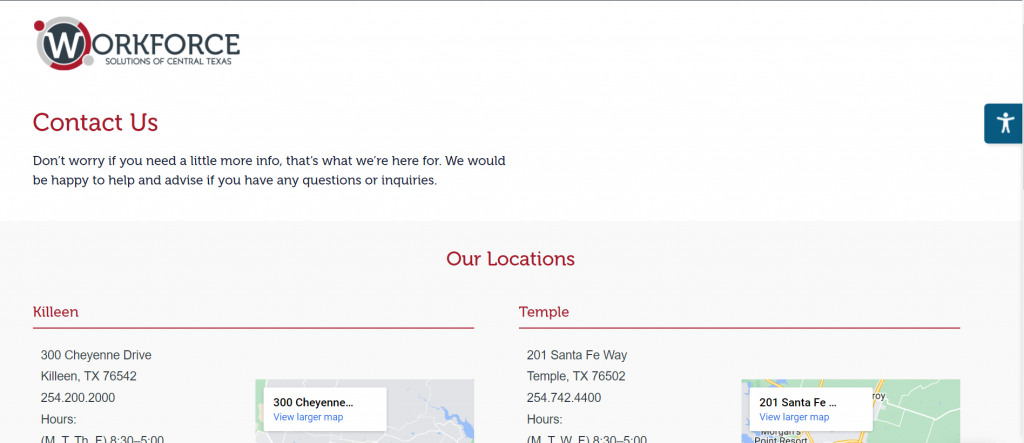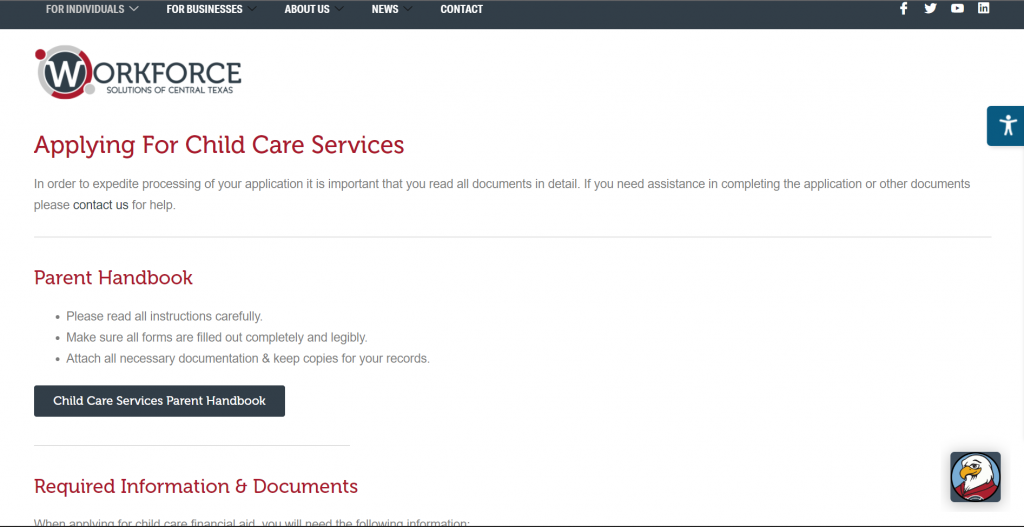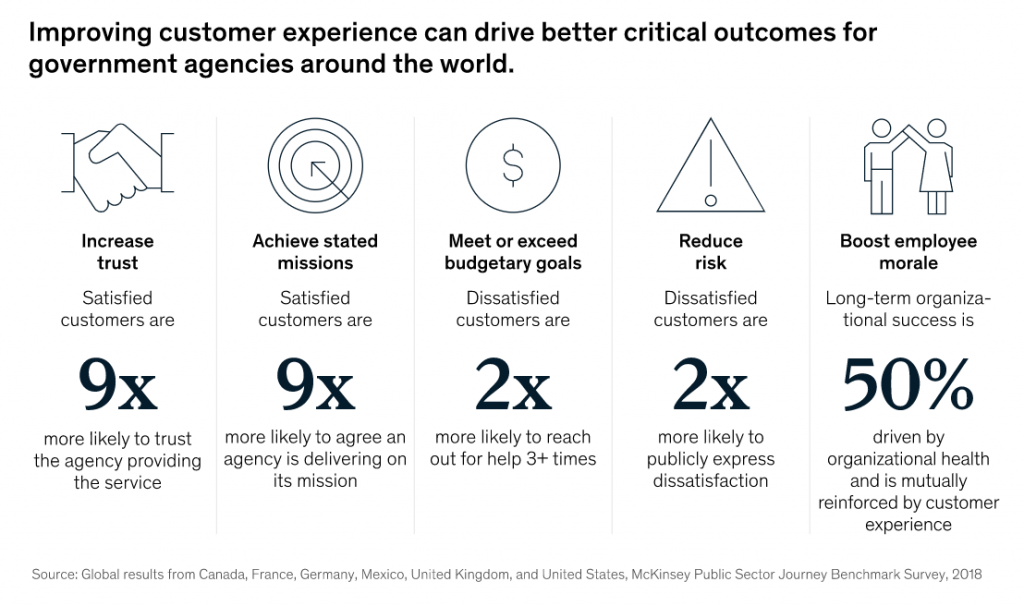How Workforce Solutions of Central Texas used an AI Agent to automate 100% of their L1 Citizen Support

For centuries, the State of Texas has carefully preserved the old American frontier spirit — with cowboys, ranching, country music and barbeque. As anyone who has ever been to Texas will tell you — old Americana reigns supreme in the ‘Lone Star State’.
At the same time, Texans have never ignored the demands & pressures of a growing modern economy that’s notorious for keeping even the best on their toes. In alignment with the market’s ‘adapt or die’ ethos, the then Governor George W. Bush established the Central Texas Workforce Board (CTWB) in 1996. It’s purpose? Providing solutions for employers and job seekers, by patterning with community non-profits, city and county offices, chambers of commerce, businesses, local colleges and universities.
Workforce Solutions of Central Texas (WSCT) is one of 28 regional workforce development boards in Texas that is dedicated to harnessing that very vision of employer and employee assistance, by:
- Developing local plans for the use of Workforce Innovation and Opportunity Act funds.
- Aiding citizens with upskilling, training, education and childcare grants.
- Connecting unemployed individuals with businesses that are looking to hire.
- Coordinating activities with local economic development entities and employers.
When the Covid-19 pandemic paralyzed the world economy, disrupted supply chains and turned millions into jobseekers overnight, Workforce Solutions of Central Texas became especially critical to the State Government’s plans for an economic revival, particularly in the central Texan counties of Bell, Coryell, Hamilton, Lampasas, Milam, San Saba, & Mills.
Naturally, this meant responding to and solving the queries of thousands of citizens & businesses who were experiencing the turbulence of a once-in a lifetime crisis. That’s where Tars came in.
Wondering what we did? This is the story of how Workforce Solutions Of Central Texas used a Chatbot Assistant to automate 100% of their L1 citizen support conversations (online) ⤵️
Understanding Government Chatbots
When we talk of Government Chatbots, we are referring to the conversational technology that automates engaging interactions at scale, between citizens and their local, city & state governments.
With the rise of the internet economy, citizen expectations from all service-providers have dramatically changed — so much so that even Governments can’t afford to be unresponsive and aloof. This has inevitably lead to an absolute explosion of chat-based automation in Government, with states like Missouri, Indiana & Montana in the US leading the way.
This is especially important when we consider the scale at which Governments typically operate. Unlike most companies which have only a handful of service offerings and encounter limited volumes of consumer traffic; democratic governments are answerable to millions of citizens for an infinite buffet of civic & welfare services.
In an age when Americans barely have the patience to wait an entire day for Amazon deliveries, no longer would outdated websites with a maze of interlinked pages be enough.


As more and more state agencies realized this, Government Chatbots saw their inevitable rise in the public sector. Now with a simple widget on their websites (or web-apps), government had an opportunity to drastically improve their citizen experience. Where did this matter the most?
In L1 citizen support.
What is L1 Citizen Support ?
You see, not all queries are created equal. In the language of citizen support, these queries usually can be classified in the following categories 👇🏼
✅ L1 Queries: These are simple, repetitive and easily predictable citizen queries. At this stage of the support process, the priority lies in logging of the issue at the first point-of-contact, and then resolving them through automated solutions.
✅L2 Queries: These are complex citizen queries that involve high-order problems that cannot be resolved through AI automation. Often involving multiple variables and novel issues, these L2 queries cannot be resolved without the human touch.
It is at the L1 support stage that chatbots deliver real value. Not only do they improve the citizen experience by delivering instant answers, but they also save the Government boatloads of time & resources.
Why Workforce Solutions Of Central Texas Needed A Chatbot Assistant
While Workforce Solutions has dozens of responsibilities, they are primarily in the business of providing upskilling, training and childcare assistance, as well as connecting local job-seekers with employers. Here’s how they see their role in the Texan economy, in their own words 👇🏼


Clearly, WSCT is deeply invested in helping citizens navigate the challenges of the ever-changing job market with both market resources & welfare support. But what about navigating their own services?
For a long-long time, the good citizens of Central Texas had only one, singular resource for citizen support on the Workforce Solutions Website – a Contact US page 👇🏼

Before Tars, individuals and businesses in Central Texas either had to shoot an email to Workforce Solutions or using the directions in the Contact Us page – physically go over to their various local offices.
For an organization that had so much to offer – both in terms of resources and expertise – on their website, WSCT’s support services were in serious trouble. This is because they were facing two big problems 👇🏼
🎯Low citizen satisfaction due to lack of instant, round the clock L1 citizen support.
🎯No automated process to qualify & escalate queries for personalized L2 citizen support.
Relying on staff members to be on the clock 24×7, provide L1 support in addition to qualifying thousands of queries and answering each of them individually, was clearly not a practical solution.
While WSCT could have done what tons of other governments do – add a web-form and simply wash their hands off the problem, they knew it wouldn’t be helpful in the least. This is because Web-Forms by their very nature
- are unresponsive and don’t provide immediate answers.
- become large and unwieldly when collecting lots of data.
- are uninviting, intimidating and complex.
- universally low in the CSAT they generate.
No, what Workforce Solutions needed was a citizen support solution that would resolve L1 queries and automatically qualify & escalate L2 queries, helping both employers and job-seekers with the personalized citizen support they need, 24 x7.
In other words what Workforce Solutions needed was a Tars Chatbot Assistant.
How Did The Chatbot Resolve L1 Support Queries
Step 1️⃣: Let’s say a 24 year old, grad student in Central Texas is looking for childcare assistance and they land on WSTC’s website. The first thing that will catch their attention is the chatbot widget on the bottom right corner with a callout that reads. “Have questions? I’m here to help!”

Step 2️⃣: Once a citizen clicks on the widget, the bot will introduce ‘Eager The Eagle’, which is the fun persona of WSCT’s Customer Support Chatbot.
With the introduction done, the bot will offer the citizen a bunch of options for the various services that WSCT can help him out with 👇🏼

Step 3️⃣: Let’s assume that the the citizen chooses the ‘I need Child Care Assistance‘ option. Here’s what they’ll see next 👇🏼

Step 4️⃣: Let us assume the citizen in question is a parent/guardian, and thus chooses the first option. Now the bot will inform the individual that if his or her family meets the eligibility requirements and WSTC has funds available, then they could finance their childcare costs.
With that brief introduction to their childcare grants done, the bot will present the following options 👇🏼

Step 5️⃣: Let’s say the citizen is looking for information about how to apply for childcare, and clicks on the first button. Before providing this information, the bot needs to confirm whether the citizen is actually eligible for childcare assistance.
To begin this edibility check, the bot will first ask for the citizen’s name 👇🏼

Step 4️⃣: Once the citizen has entered their name, the bot will ask the citizen in which county they live in.

This is important as WSTC serves only Central Texas and can’t deliver childcare assistance outside their jurisdiction.
Step 5️⃣: Let’s assume the citizen chooses Coryell County. Now the bot will ask the citizen to confirm whether they’re attending a school (a.k.a. college / university) full-time?

Step 6️⃣: Once the citizen chooses an option, the bot will then ask him or her to confirm whether they meet the income requirements for childcare assistance 👇🏼

Step 7️⃣: Assuming the citizen chooses yes, the bot will inform the citizen that he/she is indeed qualified for child care services. All that’s let do now is redirect the citizen to the right application resources on the website – and that’s exactly what the bot will do 👇🏼

Step 8️⃣: The citizen will be automatically redirected (in a new tab) onto WSTC’s Childcare Application page.

This entire flow is a great example of how chatbot conversations can help government agencies and departments automate their L1 Support.
But what about those complex queries which really require escalation to a human-agent?
How Did The Chatbot Qualify & Escalate L2 Support Queries
Step 1️⃣: Let’s go back to the Main Menu to understand how this chatbot can qualify & escalate L2 support queries. Once again with the introduction done, the bot will offer the citizen a bunch of options for the various services that WSCT can help him or her out with 👇🏼

Step 2️⃣: Let’s assume that the the citizen in question is looking for education or training for a new career. Once they choose that option, the bot will briefly mention the kind of training and upskilling services that WSCTC can help citizens out with, before starting its query qualification flow.
Why qualify queries? This is to ensure that the bot collects all the relevant details about the citizens so as to provide personalized support. To begin with, the bot will ask the citizen when they have a high school diploma or it’s equivalent 👇🏼

Step 3️⃣: Next, the bot will confirm whether the citizen is legally authorized to work in the United States👇🏼

Step 4️⃣: Next, the bot will confirm whether the citizen is able to meet the background check for the new career they have selected 👇🏼

Step 5️⃣: Next, the bot will ask the citizen is to specify which age bracket they are in, from the following options 👇🏼

Step 6️⃣: Next the bot will ask the user whether they are registered for selective service 👇🏼

Step 7️⃣: Next the bot will confirm whether the citizen is currently employed 👇🏼

Step 8️⃣: Next the bot will confirm whether the citizen was laid off through no fault of theirs 👇🏼

Step 9️⃣: Next the bot will confirm whether the citizen is a U.S Military who has been honourably in the last 6 months or a military spouse 👇🏼

Step 1️⃣0️⃣: Next the bot will confirm whether the citizen is a former Fort Hood Employee/ Civilian Contractor who has been laid off?

Step 1️⃣1️⃣: Next the bot will confirm whether the citizen has been approved for unemployment benefits 👇🏼

Step 1️⃣2️⃣: With all the relevant query details collected, the bot will now ask the user what kind of Training or Education related help they are looking for.

(Take a second to appreciate how important the query qualifications question were. If the bot had directly presented this options first, then the WSTC Support Team would have no way to personalize their citizen support for this individual)
Step 1️⃣3️⃣: Lets assume that the citizen is looking for help with training-related expenses. Once the user clicks on his preferred option, a new chatbot landing page will open up to capture the personal details (starting with the name) of the citizen, so that the CS Team can reach out to them for further help 👇🏼

Step 1️⃣4️⃣: Next the bot will ask the user to mention in their own words, the nature of their training related expense 👇🏼

Step 1️⃣5️⃣ : Finally, the bot will collect the email address or phone number of the citizen. With that the conversational flow would come to an end.

What Was The Impact ?
The impact was spectacular!
Using a Tars Chatbot Assistant, Workforce Solutions of Central Texas was able to automate a full 100% of their online L1 citizen support! In fact, we were especially critical in delivering instant value to job-seekers and businesses during the Covid-19 period.
But before we appreciate the true impact of Tars Chatbots for WSTC, we must understand what were their citizen support KPIs. Workforce Solutions of Central Texas had set their Chatbot Assistant’s goal as achieving one of these two scenarios ⤵️
- A bot visitor successfully finishes the entire L1 support conversation, and is redirected to a page within the website
- A bot visitor successfully finishes the entire L2 qualifying conversation, and is then redirected to capture his or her personal details, for personalized L2 support.
What do you reckon was the Goal Completion Rate for this very rigorous KPI? The answer is an incredible 11%. Yes, you read that right 11%!
This is especially impressive when you compare our success to the broader public sector – where average citizen satisfaction is at an all-time low, and where (according to McKinsey) improved citizen experience can drive the following results 👇🏼

How To Get Started?
Book a demo with us today and one of our in-house chatbot experts will personally walk you through the entire process!
Soham is a content marketer on the Tars team. When he's not writing kickass blog posts like the one you just read he's reading obscure articles from history's foremost anti-enlightenment thinkers and writing treatises to send to his 3 substack subscribers.
- Understanding Government Chatbots
- What is L1 Citizen Support ?
- Why Workforce Solutions Of Central Texas Needed A Chatbot Assistant
- How Did The Chatbot Resolve L1 Support Queries
- How Did The Chatbot Qualify & Escalate L2 Support Queries
- What Was The Impact ?
- How To Get Started?


Build innovative AI Agents that deliver results
Get started for freeChosen by 800+ global brands across industries
Recommended Customer Success stories

AI in banking: Croí Laighean Credit Union’s journey to efficient customer support

45% reduction in support requests: VM Group’s success with Conversational AI Agents

How Tata Motors Finance generated 69,000+ leads with strategic CX automation?

Our journey in a few numbers
With Tars you can build Conversational AI Agents that truly understand your needs and create intelligent conversations.
years in the conversational AI space
global brands have worked with us
customer conversations automated
countries with deployed AI Agents










